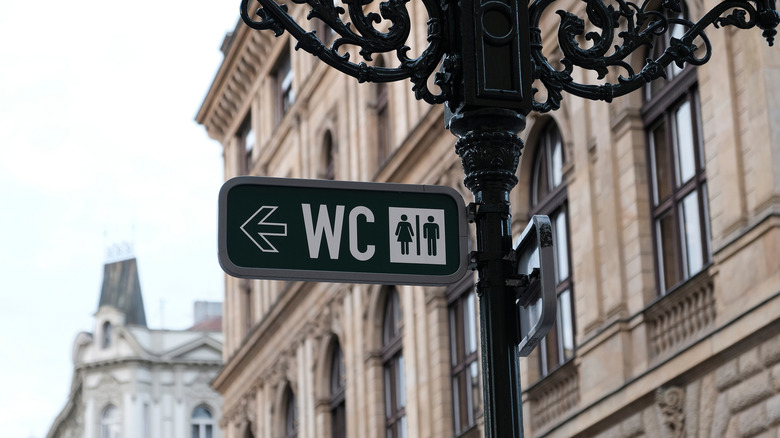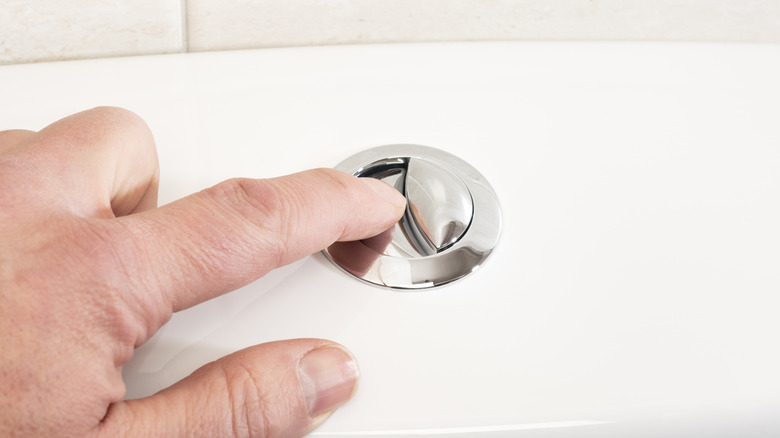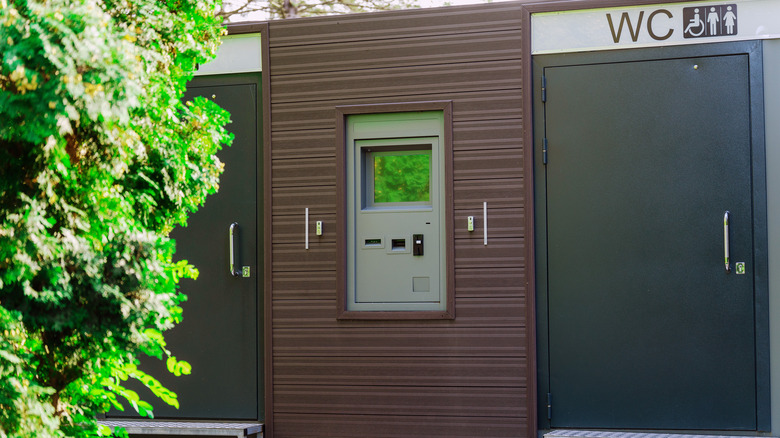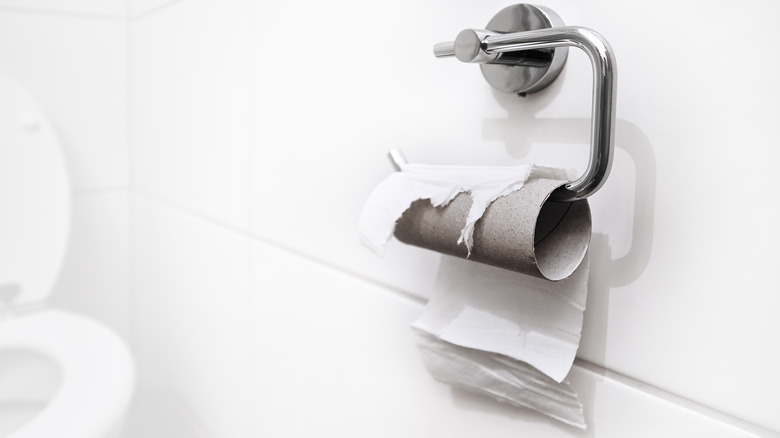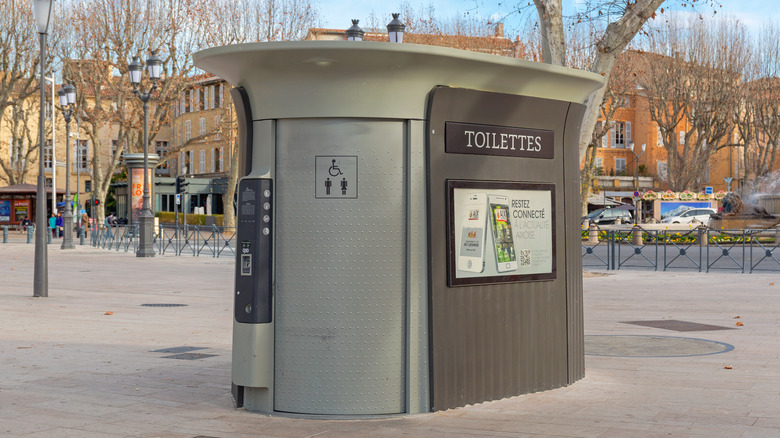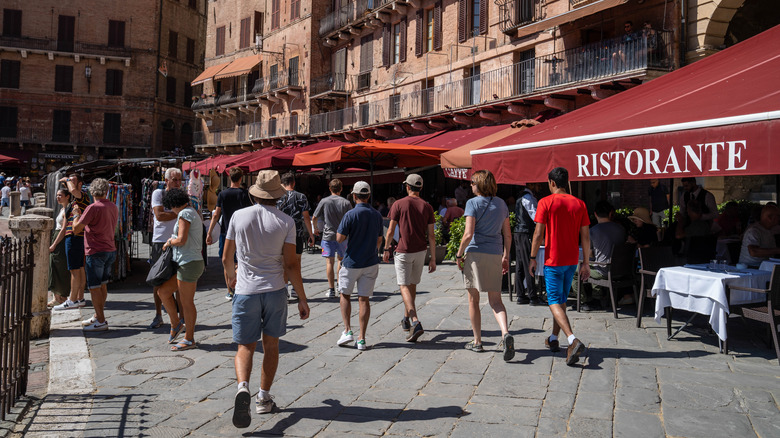Rick Steves Reveals The Unexpected Toilet Info You Need To Know Before Visiting Europe
No matter where you travel, there are a few customs that exist in every culture: eating nourishing meals, finding a place to rest after a long day, and using some kind of toilet. The latter may seem straightforward, but restroom rituals can vary a lot depending on where you are. In the U.S., for instance, public toilets are often provided in restaurants, bars, shopping malls, and even supermarkets. They're typically divided by gender and, once you step inside, you can usually expect to find private stalls equipped with a sitting-style toilet and toilet paper. While cleanliness levels can vary, the toilets are generally hygienic enough for doing your business and leaving — and, best of all, they're usually free.
Take a flight just over the Atlantic, however, and these norms are no longer so normal. In Europe, restrooms (which you might locate using another name, such as "W.C." or "the loo," depending on which country you're visiting) have their own set of conventions that can come as a shock to outsiders. European travel expert Rick Steves shared must-know insights on his website so you're not caught with your pants down — literally or figuratively — when using the bathroom overseas.
Flushers might not be what you're used to
It's happened to all of us at some point: You need to use the restroom, so you walk into a stall, only to realize a surprise has been left in the toilet by a previous user. If you come to Europe unprepared, you could be the one inadvertently leaving the toilet unflushed. That's because, as Rick Steves writes, flushers can sometimes be a bit confusing in other countries. The simple handle you use at home might be replaced with something totally different, and these designs can vary depending on what part of Europe you're in.
The three main variations you're likely to find include a pull string, a two-button flusher, and a handle. The string is simple: Pull down gently to trigger the flushing mechanism. For two-button versions, you'll likely find that one button is reserved for smaller flushes, while the other uses more water for a bigger flush. Finally, the handle flushers are similar to North American ones, though they sometimes require a careful push (or several pushes) to work properly.
Steves also notes that not all European plumbing systems are equipped to handle toilet paper. This is most common among toilets in Greece and other Eastern European countries. If you see a trash receptacle filled with toilet paper, toss yours in there too rather than flushing it in the toilet.
You might have to pay
Using the restroom is something you're entitled to do for free, right? Not necessarily. Rick Steves warns that you might have to pay up before you can enter public facilities. In parks, train stations, rest stops, and near popular tourist spots, you'll often find that the bathroom requires a few coins before you're allowed to enter. In modern washrooms, you may be able to pay with a credit card or phone app instead.
Fees to use the restroom in Europe vary, though you can generally expect to pay no more than around $1 per use. And before you think it might be better to relieve yourself on the sidewalk or in a bush, know that doing so could cost you a lot more than using a designated paid toilet. In 2017, a 19-year-old man was fined 10,000 euros (over $10,000, depending on exchange rates) for urinating in an alleyway in Italy, per The Local. Always follow local laws and use the appropriate restroom areas, even if it means paying a small fee.
Toilet paper isn't always available
In tourist destinations such as London, Paris, and Amsterdam, you can generally expect to find toilet paper provided in each restroom stall. However, if you use facilities that haven't recently been serviced and stocked, you might have to do your business without wiping after. To avoid this, Rick Steves suggests keeping your own travel pack of tissues in your bag or pocket for emergencies.
The travel guru also adds that some public restrooms require you to buy toilet paper first. In these instances, the toilet is often free to use, and only the paper costs a fee. If you run into this situation, pay the required charge or, if the fee is optional, leave a small tip instead.
Besides standard toilet paper, you might find other useful tools to help you cleanse your derrière while visiting Europe. If you see a hose attached to the toilet, feel free to use this sprayer on your bottom, similar to how you'd use a shower hose. If you see two "toilets" side by side, the one with the smaller seat is actually a bidet for spraying yourself after you've finished using the first toilet.
Some toilets are found on the street
While strolling the streets of Stockholm or Prague, you'll likely pass newsstands, coffee houses, bus stops — and toilets. Rick Steves reveals that, unlike in the U.S., some large European cities offer public paid toilets along sidewalks and on street corners, making it easy to stop and go whenever nature calls.
Look for the male and female symbols or a "W.C." sign (which stands for "water closet"), and make your payment just outside the entrance. Once you've paid, slip inside the private stall, which may limit your use to a set time, such as 15 minutes. Most street lavatories also come equipped with a sink to wash your hands and, as Steves says, some are designed to self-disinfect after each customer finishes. Sure, using a public toilet in the middle of a busy neighborhood might not sound appealing, but the ones in Europe are often a major upgrade from the outdoor stalls and portable potties you might be used to.
When in doubt, step into a restaurant
If you've been walking around for a while and haven't stumbled upon a public restroom, your best bet, according to Rick Steves, is to find a restaurant, cute café, or other establishment serving food and drinks (the one exception being restaurants or coffee stands that only offer to-go items). Ordering a meal or drink is one way to gain access to the restaurant's toilets, but if you're in a rush — or not in the mood for another cappuccino — Steves suggests walking confidently into the building, as if you're a customer who just needs to use the loo.
The European travel expert advises travelers to make a beeline for the back of the room, where the restrooms are often located. If you don't find the toilets there, head upstairs or into the downstairs basement instead. If you get lost, politely ask a waiter or staff member for directions to the W.C. — chances are, they won't realize you're not a diner; and even if they do, they may not mind if you use the bathroom. Go inside, be brief, and leave as soon as you're done so you can get back to the sightseeing and exploring you came all the way to Europe for.
